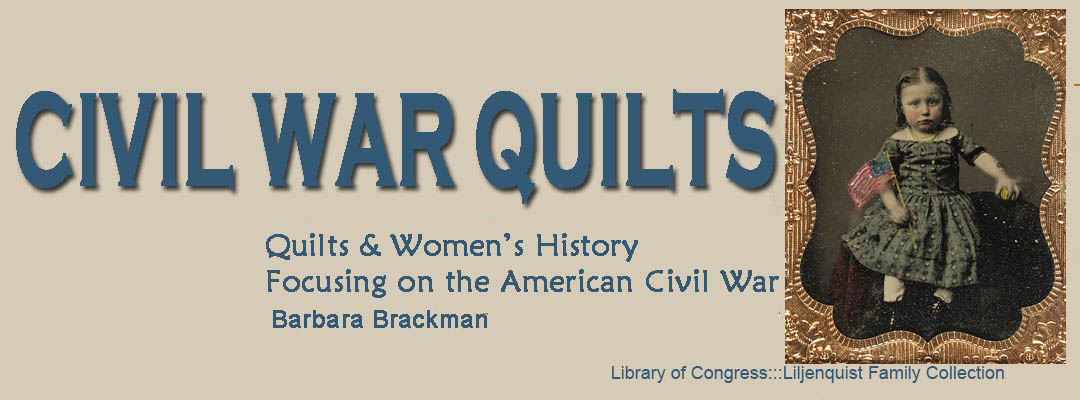In 1860 she married William W. Edwards who spent his career in banking after serving with the Union's Ninth Kentucky Cavalry. The year the Civil War began she gave birth to her only child, Loulie, a quiltmaker too according to the magazine article.
Wednesday, November 27, 2024
Kentucky Classic #9: Bluegrass Bouquet for Sarah Nelson Edwards
In 1860 she married William W. Edwards who spent his career in banking after serving with the Union's Ninth Kentucky Cavalry. The year the Civil War began she gave birth to her only child, Loulie, a quiltmaker too according to the magazine article.
Wednesday, November 20, 2024
Petticoat Press: Next Year's Pieced Block of the Month
Petticoat Press: Pieced Block of the Month For 2025 at
CivilWarQuilts
When the Civil War commenced Americans had over 3,500 newspapers to inform them of battles, policy and shape their opinion. The newspaper correspondent had established an important position in public discourse and as the telegraph was introduced immediate battle reports became the news.
War reporting was man’s domain but we find bylines from several female journalists. The pieced block of the month here at CivilWarQuilts for 2025 celebrates a dozen of those female journalists who reported on the war from battlegrounds to Washington parlors.
Pettitcoat Press Sampler: The 12 monthly blocks are based on an X seam structure and the "Official" setalternates a simple X block. You need 12 sampler blocks and 13 of the alternate block.
Wednesday, November 13, 2024
Washington Whirlwind #11 Road To the White House (& Away)
Roads go two ways. This month's block remembers the painful road away from the White House that Mary Todd Lincoln and her sons took after Lincoln's assassination. They were required to vacate the family quarters for new President Andrew Johnson, wife Eliza, their grown daughters and children.
Robert "tried without avail to influence his mother to set fire to her vast stores of old goods. ‘What are you going to do with that old dress, mother?' he would ask. ‘Never mind, Robert, I will find use for it. You do not understand this business.’
"I wish to heaven the car would take fire in which you place these boxes for transportation to Chicago, and burn all of your old plunder up;’ and then, with an impatient gesture, he would turn on his heel and leave the room."
The boxes were full of her "dresses" at a time when the word could mean the yardage as well as the finished garment, fabric Mary would never wear again in her conspicuous mourning but fabric she transported many yards from home to home for the rest of her life.
Mary and Tad began housekeeping in Chicago where Robert was settling into a life as independent of his mother as he could create.
Diarist Benjamin Brown French who had worked closely with her for four years wrote on May 24th, 1865:
“Mary Lincoln left the city …I went up and bade her good-by, and felt really very sad, although she has given me a world of trouble. I think the sudden and awful death of the President somewhat unhinged her mind, for at times she has exhibited all the symptoms of madness…it is well for the nation that she is not longer in the White House.”
After years of being rather circumspect about the First Lady he wrote: “It is is not proper that I should write down, even here, all I know! May God have her in his keeping, and make her a better woman." He continued to act as the official introducing the Johnson Presidential women at public events.
"Oh how different it is to the introductions to Mrs. Lincoln! She sought to put on the airs of an Empress – these ladies are plain, ladylike, republican ladies, their dresses rich but modest and unassuming.”


























































